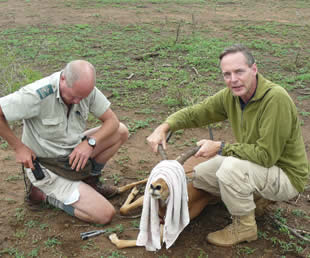News
How wild is wilderness? David Macdonald reports on a new WildCRU paper that reflects on prey without predators (and the tangled influences of predation and the weather)
There is much about conservation in South Africa which is successful but also provocative, and one such thing is the proliferation there of relatively small fenced reserves, raising tricky questions about exactly what is wilderness and what is natural. Smaller reserves with few, or even no, large predators are an increasingly popular business model in southern Africa. In a recent paper led by Dr. Christopher O’Kane of WildCRU (link: http://dx.doi.org/10.1016/j.baae.2015.11.001) we reveal some important consequences for prey of living in a predator-free world.
Christopher’s observations of antelope in fenced reserves without predators, compared to those with predators, revealed to us how the lack of predation skewed herbivore sex ratios to an (unnatural) increase in males. This is because under predation adult males generally suffer greater mortality than do females – the larger meal the heavier male provides is a more attractive target for lions, males away from harems of females live either in small groups or alone making them easier targets for all predators, and territorial males living with their harems will frequently try to defend their females from predators, often with fatal consequences.
One conclusion is that in predator-free reserves managers need to take the place of predators and actively manage herbivore male to female ratios, as unnatural sex ratios can lead to changes in social interactions, influence population growth and, in the longer term, may affect natural selection. Furthermore, Dr O’Kane’s work in KwaZulu Natal, Republic of South Africa revealed a further complication in that we found a hitherto unappreciated compound effect of low rainfall and predation: when predators strike in dry weather the result is unexpectedly high mortality of juvenile antelopes.







